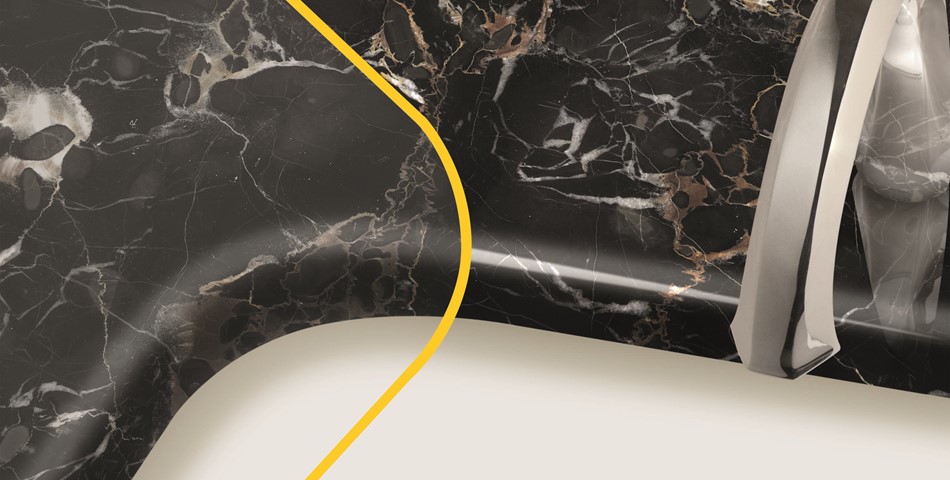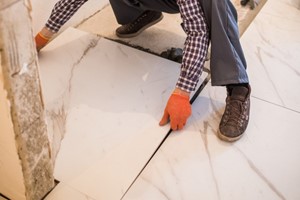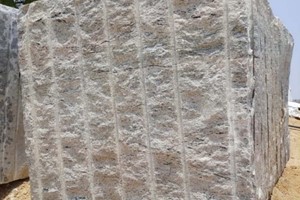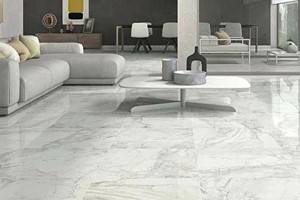Marble and granite have been used for thousands of years in both interior and exterior applications. Their unique aspect and distinct shades make them choice material for prestigious architectural projects and they are extremely popular in the Middle East region. Both natural stones are significantly more expensive than man-made material but they bring impressions of elegance, durability, and lasting quality that cannot be rivalled by other material.
One thing that needs to be kept in mind when using marble and granite in a construction project, is that whether they are used for flooring, countertops, stair treads or to ornament a building façade, both natural stones have to be properly sealed to keep their pristine and beautiful appearance in the long run. Indeed, marble and granite are porous and therefore susceptible to stains, as liquids or organic matter that may come in contact with them can seep into the stone and cause irremediable damage once they have penetrated the surface.
For indoor areas, sealing the granite and marble after laying means preventing colored stains, dullness or a white film from forming on the surface of the stone. In the specific case of kitchen counter-tops and floors, the sealer used should be tested and certified food-safe.
Marble has long been less recommended in kitchens as it is vulnerable to acidic spills and heat while granite is not, however new technology is now available that protects marble from acid attacks. The newly-developed sealer should be applied only by qualified premium FILA applicators for optimum protection.
For outdoor areas, a sealer protects the stone against deterioration caused by weathering, and prevents efflorescence. This sort of protection was used on the exterior granite paving of the New Presidential Palace in Abu Dhabi. We first used a back and side sealer to prevent the rising of iron salts efflorescence, then sealed the top surface of the stone to protect it from the deterioration due to atmospheric agents and pollution, while keeping its natural ability to breathe. Indeed, the right sealer should allow the stone to breathe, keep the natural look of marble or granite, and should not yellow due to time or environmental conditions. If water-based, it can be applied with residual moisture, cutting down application time by up to 80 percent.
For optimum protection, particularly in the case of marble, it is strongly recommended to seal all sides of the surface by applying a pre-treatment even before laying. This will prevent irreversible damage such as internal rust, discoloration or internal stains.
Sealing marble and granite against stains is a straightforward process, however it is essential to follow the below steps for the best results.
Step 1: make sure the area is perfectly clean and dry. Remove all traces of organic and inorganic stains with a professional detergent before applying the sealer. If the area is not properly cleaned, the dirt or stains left will be trapped between the surface and the sealer, which means the surface will look dirty for years to come, and because the residue will clog the pores of the stone, the sealer will not properly penetrate the material’s structure.
Step 2: apply the sealer following the manufacturer’s instructions. For outdoors areas, do not start the application if rain is forecast. If rain comes unexpectedly, stop the treatment and cover the entire surface. Make sure no one walks on/touches the surface during the required application time. Curing time should be properly respected, and for outdoors areas in countries where temperatures can rise very high, the application of the sealer should take place in the early morning or late afternoon to avoid the premature evaporation of the sealer that can be caused by intense heat.
Step 3: maintain marble and granite with the right detergent. Sealing surfaces is essential to prevent the material from being irremediably damaged by the absorption of dirt into its surface, but it still needs to be regularly cleaned and maintained. At FILA, we recommend a neutral pH 7 cleaner for everyday maintenance of marble and granite.
Step 4: refresh the protection on surfaces that are commonly used every year to safeguard the beauty of the stone in the long run.
It is worth noting that some water-based environmentally-friendly sealers for marble and granite can contribute towards LEED credits.














